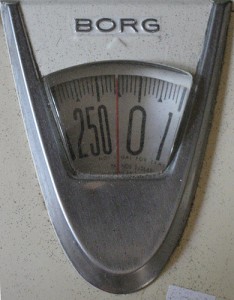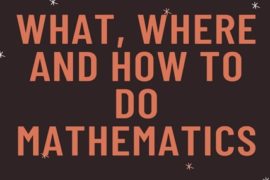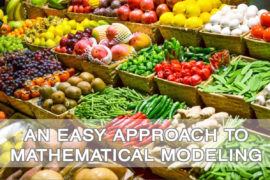I am not one to talk about my personal weight loss (or gain, usually), especially since I’ve spent years bouncing between feeling good about my figure and avoiding mirrors at all costs.
Fact is, I’ve tried lots and lots of diets — the South Beach Diet, Body for Life, calorie counting, Weight Watchers. I’ve even tried hypnosis and extreme exercise. But even though I have never felt completely successful in these attempts, I haven’t failed. Each time, I’ve refined my goals and figured out things that I will and won’t do.
With all this in mind, I decided in late December that I was going to give Weight Watchers another try. Two things have happened since I was last actively using the program: the PointsPlus program has been refined just a bit, and I wrote a math book. I have to say that thinking about math so much over the last year has been a great benefit in figuring the PointsPlus values for everything I eat.
(In case you have been living under a rock or don’t know who Jennifer Hudson is, the Weight Watchers program is based on a points system. Each person is allotted a certain number of points per day, based on their weight and gender. Everyone also has 49 extra points to eat throughout the week. Foods have points values based on… well, read on, because that’s kind of what I’m getting to in this post.)
My daily PointsPlus allotment is 26. I use online tools to help me track the points of the foods that I’m eating (and the drinks that I’m drinking). And of course, I have those extra 49 points to spread throughout the week.
So first, my math brain figured out that if I use up all 49 points throughout the week (and believe me, I do!), that translates to 7 points per day. If I only eat an extra 5 points one day, I have an extra 9 points on another day. (The 49 points carry over, but if I don’t eat all 29 points in a day, poof! they’re gone.)
Believe me, I’ve gotten damn good at these little calculations. An extra 2 points is the difference between a light and a regular beer.
But it’s the points values themselves that are so amazing, mathematically speaking. Weight Watchers has done some pretty tricky math to make it easier for us to figure out what to eat. Instead of counting just calories, we’re considering four components of our food: protein, fiber, carbohydrates and fat. These values are run through a formula that outputs a handy-dandy PointsPlus value. (Online tools and special calculators find PointsPlus values for any foods, and common values are listed in a variety of Weight Watchers resources.)
This formula is pretty complex. I’ve seen versions of it online, and apparently it is written in black and white in Weight Watcher’s patent. But I don’t need to have the details to know some pretty simple things:
1. Four of the formula’s variables are the amount of protein, fiber, carbohydrates and fat in the food.
2. The answer is likely rounded, since PointsPlus values are all whole numbers.
That last one is pretty important. It means that 0 points isn’t necessarily 0 points.
You see, almost all veggies and fruits count as 0 points — a big change in the program. This makes perfect sense, because we should all be eating more fruits and veggies, not deciding between a banana and a low-calorie fruit bar that was made in a factory far, far away.
But fruits and veggies have calories and sugars. That means an apple may actually have 0.2 points (or something like that). So while one apple may be 0 points, 7 apples probably aren’t. In other words, this is a case of 0 + 0 ≠ 0.
If you’re among the thousands of folks who joined Weight Watchers this month, count math among the skills that will help you lose weight — whether you’re counting your points or trying to make sense of how it all works!
Are you a Weight Watchers member? How have you used math to help you stay on track? Or if you’ve managed your diet in other ways, how has math helped? Respond in the comments section.








Comments are closed.